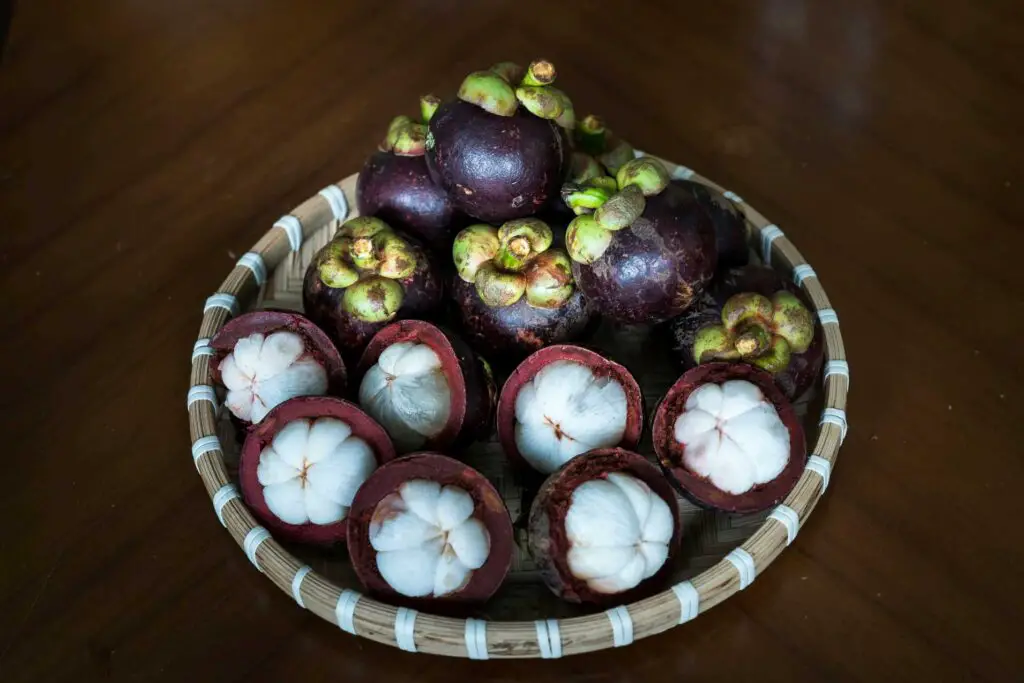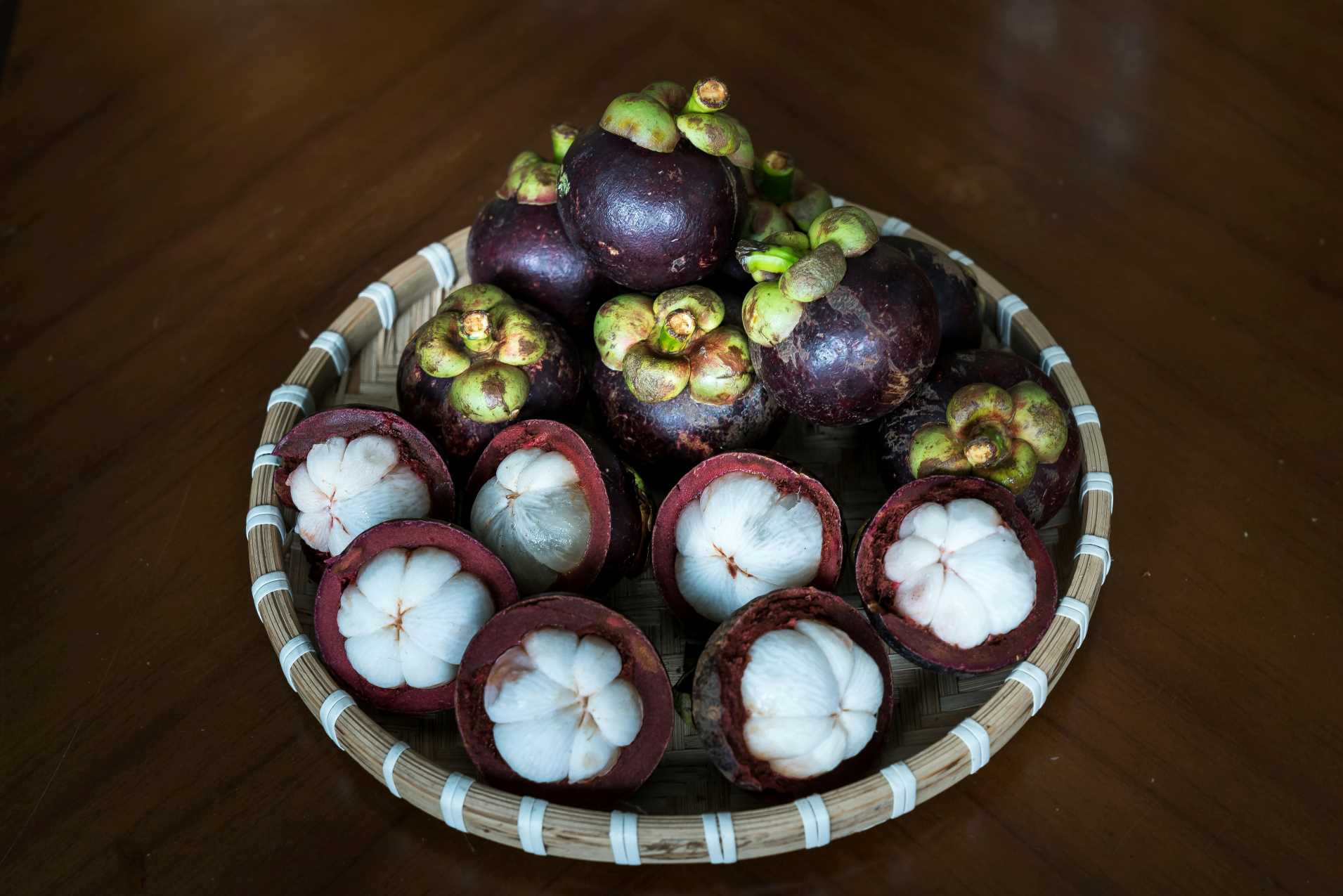Mangosteen, often referred to as the “queen of fruits,” is a tropical delicacy cherished for its sweet and tangy flavor. Originating in Southeast Asia, mangosteen is prized not only for its taste but also for its health benefits, as it is rich in antioxidants, vitamins, and minerals. However, one of the most common challenges for those new to this exotic fruit is determining its ripeness.
A ripe mangosteen offers an unparalleled burst of flavor, while an unripe or overripe one can be disappointing. So, how can you tell if mangosteen is ripe?
In this guide, we’ll explore the art of identifying ripe mangosteen through visual cues, touch, smell, and real-life experiences from seasoned mangosteen lovers.
Table of Contents
The Life Cycle of Mangosteen
Before diving into the signs of ripeness, it’s important to understand the stages of mangosteen’s life cycle.
- Flowering: Mangosteen trees produce small flowers that develop into fruits.
- Unripe Stage: The fruits are green and hard, indicating they are not ready for consumption.
- Ripening Stage: The fruits gradually turn from green to purple, softening as they mature.
- Overripe Stage: If left too long, the fruit’s skin becomes very hard, and the flesh inside starts to degrade.
Knowing this cycle helps you identify the optimal stage for picking and enjoying mangosteen.
Also read, Grapefruit: Benefits, Side Effects, How to Eat, Is it Good & More.
The Visual Cues: What Does a Ripe Mangosteen Look Like?

Visual inspection is the first step in determining ripeness. Here’s what to look for:
Color Transition
- Unripe Mangosteen: The outer rind is green or pale purple. This is a clear sign the fruit needs more time to ripen.
- Ripe Mangosteen: The fruit’s rind turns a deep, rich purple or burgundy. Some mangosteens may have small patches of yellow or green, but this is normal.
- Overripe Mangosteen: The rind becomes almost black and excessively hard.
Texture of the Skin
- Ripe mangosteens have a slightly pliable rind. If it feels rock-hard, the fruit may be unripe. On the other hand, if the skin is too soft and shriveled, it’s likely overripe.
Leaf Condition
The stem and leaves on the top of a ripe mangosteen should still look fresh and green. Dry, brown leaves can indicate overripeness.
The Touch Test: Feel the Ripeness
Your sense of touch is another reliable indicator. Mangosteens are unique because their texture changes noticeably as they ripen.
Firmness
- Unripe: The fruit feels rock-hard when you press gently on the rind.
- Ripe: The skin gives slightly under pressure, similar to a ripe avocado.
- Overripe: The skin feels too soft, almost mushy, which often means the flesh inside is spoiled.
Weight
A ripe mangosteen feels heavy for its size due to its juicy, plump flesh. Lightweight mangosteens may be dried out or underdeveloped.
The Smell Test: Aroma of Freshness
Ripe mangosteens exude a subtle, sweet fragrance. If the fruit smells sour or fermented, it may have gone bad. Similarly, an unripe mangosteen will have little to no aroma.
Listening to Nature: The Sound Test
While this might sound unconventional, some experienced mangosteen lovers swear by the “sound test.” Gently tap the outer rind with your fingernail or a spoon:
- Hollow Sound: Indicates ripeness.
- Dull Sound: Suggests the fruit may be overripe or spoiled.
The Real Test: Opening the Fruit
Once you’ve identified a potentially ripe mangosteen, it’s time to open it up. Here’s how to do it:
- Hold the fruit firmly but gently.
- Squeeze the rind until it cracks open. (Use a knife for tougher skin.)
- Examine the inside:
- The flesh should be white and segmented, resembling garlic cloves.
- If the flesh is brown or has a fermented odor, it’s overripe.
Personal Experiences with Mangosteen Ripeness
The Joy of the First Bite
During my first trip to Thailand, I was introduced to mangosteen at a bustling fruit market. The vendor handed me a fruit with a deep purple skin and fresh green leaves. As I cracked it open, the bright white flesh glistened like pearls, and the aroma was enticing. That bite was an explosion of sweetness and tanginess, with a creamy texture I’ll never forget.
Learning from Mistakes
Not every encounter has been perfect. Once, I picked a mangosteen that looked ripe but felt too hard. When I opened it, the flesh was tough and tart, a clear sign it was unripe. Another time, I bought a fruit with overly soft skin and found the inside mushy and brown.
These experiences taught me the importance of combining multiple ripeness indicators—visual cues, touch, and smell—to make the best choice.
Factors That Affect Ripeness
Harvest Timing
Mangosteens are typically harvested when they begin turning purple. However, the ripening process continues post-harvest.
Storage Conditions
- Room Temperature: Mangosteens ripen naturally at room temperature.
- Refrigeration: While refrigeration can extend shelf life, it may slow the ripening process.
Weather and Region
The ripening process may vary depending on the climate and region where the fruit is grown. Warmer climates often accelerate ripening, while cooler areas slow it down.
How to Store Ripe Mangosteen
Once you’ve found ripe mangosteens, proper storage is key to preserving their quality.
- Short-Term: Store at room temperature and consume within a few days.
- Long-Term: Place in the refrigerator to extend freshness by up to two weeks.
Common Myths About Mangosteen Ripeness
Myth 1: All Purple Mangosteens Are Ripe
While a purple rind is a good sign, other factors like texture and aroma are equally important.
Myth 2: Mangosteens Ripen After Being Cut Open
Unlike some fruits, mangosteens stop ripening once opened, so it’s crucial to check for ripeness beforehand.
Final Thoughts
Telling if a mangosteen is ripe is both an art and a science. By observing visual cues, feeling the texture, smelling the aroma, and even tapping the fruit, you can make an informed decision.
And remember, practice makes perfect—every mangosteen you pick teaches you something new about this exquisite fruit.
Mangosteen is more than just a fruit; it’s a sensory experience. When you get it right, each bite rewards you with a sweet, juicy reminder of why it’s called the queen of fruits.
So next time you’re at a market or grocery store, use these tips to pick the perfect mangosteen and savor the delicious rewards!

